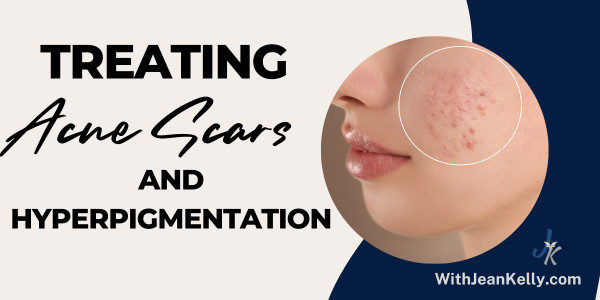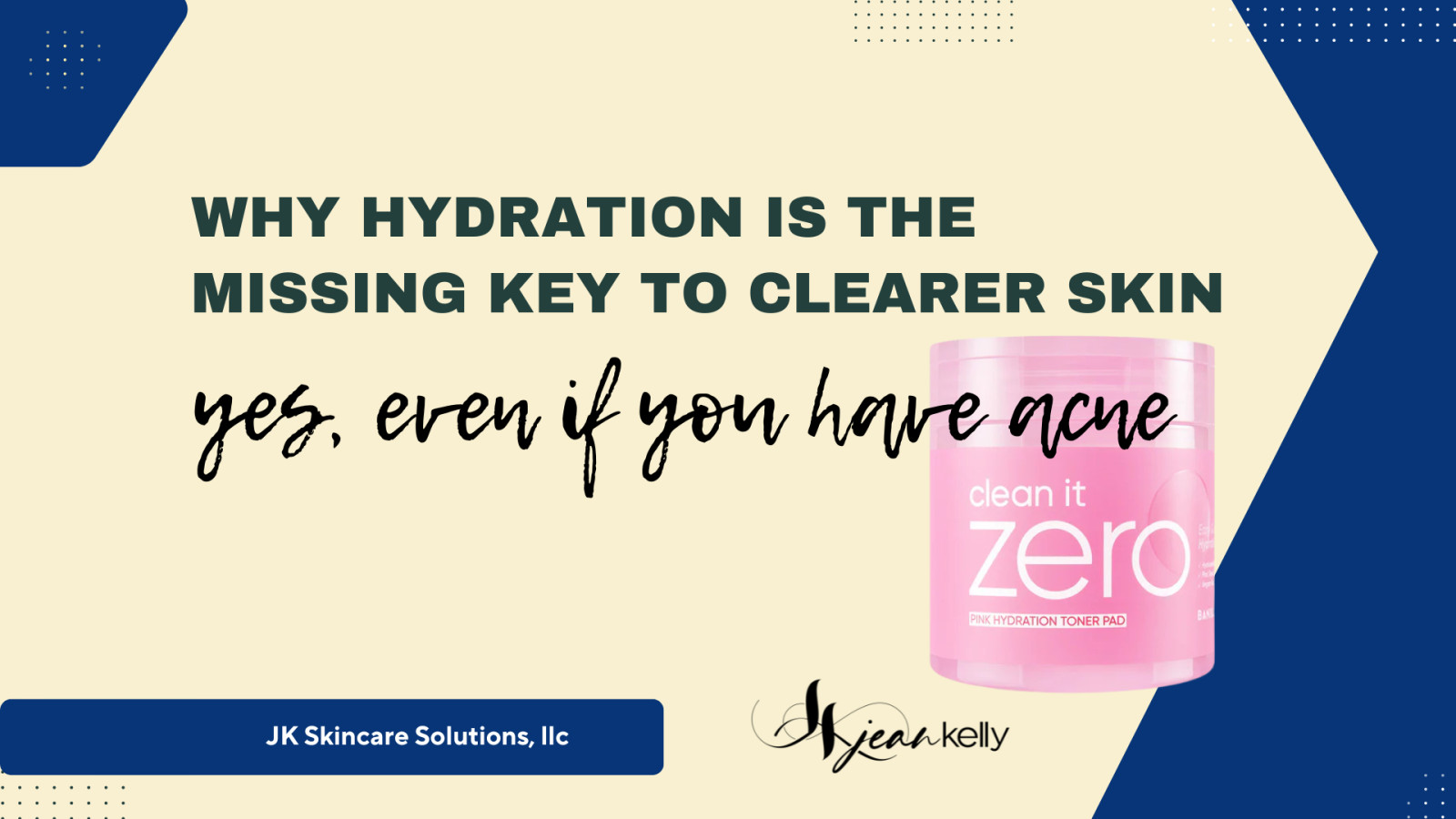
For anyone who has battled acne, the war often doesn't end with the clearing of breakouts. The victory is short-lived when the battleground leaves behind unsightly scars and hyperpigmentation. This guide is your ally, offering strategic insights and tactics to fight these post-acne adversaries.
My mission is to equip you with the best knowledge and techniques proven to restore clarity, smoothness, and an even skin tone. From demystifying hyperpigmentation to exploring the latest treatments, this comprehensive resource is a beacon of hope, illuminating the path to radiant post-acne skin.
Understanding the Enemy: What is Hyperpigmentation?
It’s crucial to recognize and understand hyperpigmentation before tackling acne scars. Hyperpigmentation refers to the darkening of the skin, which occurs when an excess of melanin is produced. This uneven pigment can manifest as freckles, age spots, or post-inflammatory hyperpigmentation (PIH).
Types of Hyperpigmentation:
Post-inflammatory Hyperpigmentation (PIH): Commonly seen after acne, this form of hyperpigmentation occurs due to an overproduction of melanin during the skin's healing process.
Melasma: Often related to hormonal changes and characterized by tan to dark brown patches, typically on the face.
Sun-induced and Age Spots: Caused by prolonged exposure to the sun, leading to localized darkening of the skin.
Understanding the type of hyperpigmentation you’re dealing with is the first step in developing an effective treatment plan.
The Scars Left Behind: Types of Acne Scars
Acne doesn't just mar your skin with breakouts; it can also leave a lasting imprint in the form of scars. Different types of acne scars require different approaches to treatment.
Common Types of Acne Scars:
Atrophic or Depressed Scars: These are the most common type, occurring when the skin is unable to regenerate tissue effectively. Subtypes include ice pick, boxcar, and rolling scars.
Hypertrophic or Keloid Scars: These are raised, thick scars that occur when the skin produces too much collagen as it heals.
Hyperpigmentation: Not always a scar, but a darkened mark left after an acne lesion has healed.
Understanding the nature of your acne scarring will guide you in selecting the best course of action for your unique skin.
Brightening the Path: Techniques to Treat Acne Scars and Hyperpigmentation
Now, we immerse ourselves in the brightening techniques that are available to you. From at-home remedies to advanced dermatological procedures, the options are diverse and dynamic, each tailored to address your skin’s specific needs.
At-Home Remedies:
Exfoliation: Regularly exfoliating the skin can help in the removal of dead skin cells, allowing new cells to regenerate more effectively.
Topical Retinoids: Over-the-counter or prescription retinoids can improve the appearance of scars and hyperpigmentation by increasing cell turnover.
Vitamin C: As a powerful antioxidant, vitamin C may help in reducing the appearance of dark spots and improving skin texture.
Clinical Treatments:
Chemical Peels: These treatments involve the application of a chemical solution to the skin, which causes the exfoliation of the upper layers, revealing less pigmented skin beneath.
Laser Therapy: Fractional laser treatments aim to resurface the skin and stimulate collagen production, effectively reducing the appearance of scars and hyperpigmentation.
Dermabrasion and Microdermabrasion: Both procedures involve the removal of the skin’s surface, with dermabrasion being more aggressive and invasive than its micro counterpart.
Microneedling: Also known as collagen induction therapy, this treatment uses fine needles to create controlled skin injury, which prompts the skin to heal and repair itself.
The key to success is consistency. Whether you opt for at-home remedies or clinical treatments, a regular and committed regimen will yield the best results.
A Balancing Act: Managing Expectations and Risks
Understanding the balance between expectations and reality is paramount. Treating acne scars and hyperpigmentation is not a one-and-done process but rather a series of steps that require patience and perseverance. Furthermore, any treatment, whether at home or clinical, carries its own set of risks and potential side effects. Before beginning any regimen, consult with a professional to understand what is realistic and safe for your skin.
Managing Expectations:
* Realize that lightening or removing scars may take time and multiple treatments.
* Understand that not all treatments will be 100% effective for your specific type of scarring.
* Appreciate that some level of improvement rather than complete erasure may be the final outcome.
Understanding Risks:
* Always follow post-treatment care advice to minimize the risk of unwanted side effects.
* Stay alert to any changes in your skin’s condition and consult your skincare professional if you notice anything concerning.
* Communicate openly with your provider about your skin sensitivities and history.
The Future Looks Bright: Emerging Technologies and Promising Research
The skincare landscape is ever-evolving, with exciting breakthroughs constantly emerging. Researchers are continually investigating novel treatments with the potential to revolutionize the way we approach acne scarring and hyperpigmentation.
Platelet-Rich Plasma (PRP) Therapy:
PRP therapy involves injecting the patient’s own blood platelets into their skin to stimulate cell growth and collagen production. While still emerging, early studies show promise for treating acne scars effectively.
Stem Cell Therapy:
Stem cells represent a beacon of hope in regenerating scarred skin. Preclinical trials have demonstrated the potential for stem cell treatments to diminish the appearance of acne scars significantly.
Nanotechnology:
Nanotechnology is opening new doors in the delivery of skin-brightening ingredients. Nano-sized particles can penetrate the skin more effectively, enhancing the efficacy of skincare products.
Anticipating these advancements can signal new horizons for those seeking to eradicate acne scarring and hyperpigmentation.
Your Path Forward: Creating a Personalized Plan for Success
With the information in hand, it’s time to create your personalized plan for success. Reflect on the types of scars and hyperpigmentation you have, the treatments you're drawn to. Then, take the first steps.
Assess the Condition of Your Skin: Take note of the severity and type of scarring you have.
Research and Consult: Look into different treatment options and consult with a skincare professional.
Develop a Treatment Regimen: Once you’ve decided on a course of action, commit to a consistent treatment regimen.
Monitor Progress: Regularly assess the results and adjust your regimen as necessary.
Remember Overall Skincare: A holistic approach to skincare, including a healthy diet and sun protection, is vital.
Remember, victory against acne scars and hyperpigmentation is not just about the treatments you employ, but the care and attention you give your skin every day.
Armed with knowledge and an array of treatment options, you’re fully equipped to declare war on your acne scars and hyperpigmentation. The battle may be long, but the victory – a clear, radiant complexion – is worth every step of the fight.
Remember, you are not alone in this. Countless others have walked this path before and stand ready to offer support, guidance, and hope. Trust in the process, be diligent in your efforts, and never lose sight of the clear, radiant skin that awaits you.
If you're interested in a more holistic approach to clearing skin you can get my FREE GUIDE "Holistic Approach To Clearing Acne Without Medications" HERE
Have a Fabulous Day!
Jean Kelly
Licensed Esthetician, Acne Specialist
PS. if you're a parent of a teen with acne, I have a Free Facebook Group you might be interested in. Check it out HERE












0 Comments